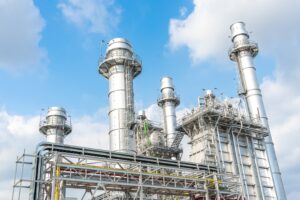Applications of Technology:
- Renewable energy conversion to fuels
- CO2 utilization and conversion
- Electrochemical fuel production
- Compact energy storage systems
Benefits:
- Exponential product yields and formation rates
- Adaptive behavior to address increasing production rates
- Efficient conversion of CO2 into formate or other fuels
- Potential for higher power utilization efficiency
- Combining fuel generation and concentration in a single unit
Background: Traditional fuel production methods typically exhibit linear scaling, where the quantity of fuel product increases linearly with time. This limitation constrains the efficiency and scalability of renewable energy efforts. This invention addresses the need for innovative approaches that can accelerate fuel production rates and improve the performance of such systems.
Technology Overview: Scientists at Berkeley Lab have developed an autocatalytic process for practical, electrochemical fuel generation that displays exponential product yields and formation rates. This approach mimics the exponential growth seen in DNA replication through the polymerase chain reaction. Key features of this technology include:
- Exponentially scaling three-step cycle: The cycle comprises three operations–CO2 carboxylation of formate into oxalate, two-electron reduction of oxalate into glyoxalate, and the hydrolysis of glyoxalate/dihydroxyacetate into two equivalents of formate. The two units of formate are fed back into the cycle to repeat the process, resulting in an exponential increase of formate as a function of time/cycle number.
- Adaptive system regulation: The system exhibits increasing fuel production rates until reaching a plateau at the power limit dictated by the source power density. Because the substrate concentration is increasing with time, this means the reaction rate increases with time as well.
- Improved electrolyzer performance: The increasing reactant concentration over time can help overcome the mass-transport limitations in traditional electrolyzers. Furthermore, a single autocatalytic electrolyzer may utilize higher power sources more efficiently than multiple linear electrolyzers.
Development Stage: Basic principles observed and reported (TRL 1).
Principal Investigators: Peter Agbo
Additional Information: A publication can be found here: https://arxiv.org/abs/2410.01282.
Opportunities: Available for collaborative research.

